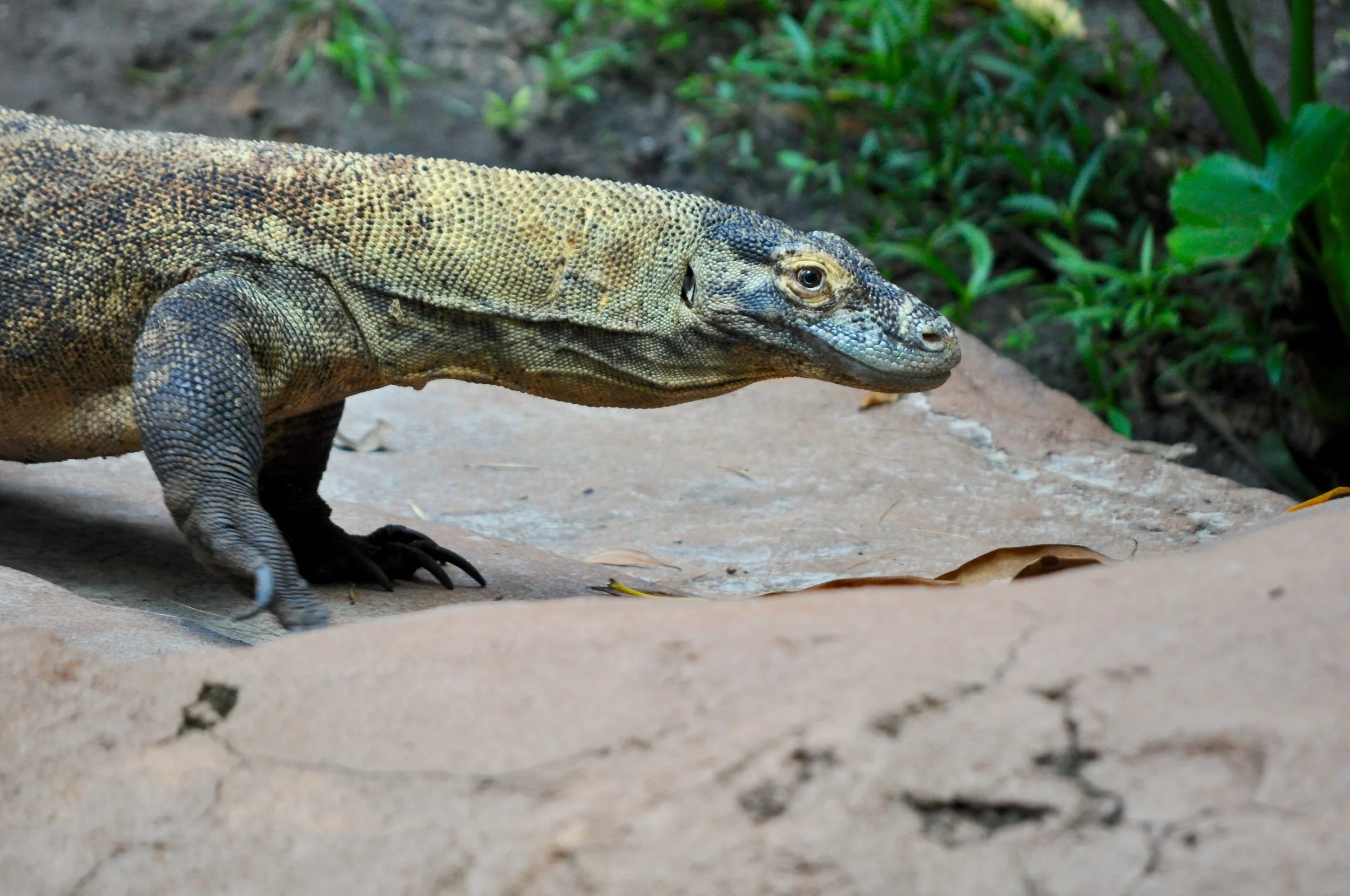Komodo Dragon Training Story
Here's the training Story of Komodo Dragons...
The Komodo dragon is the largest living lizard in the world. This lizard is native to the island of Komodo as well as a handful of other Indonesian islands. Komodos are carnivores, hunting animals as large as deer and wild pig.
Disney’s Animal Kingdom® began a training program with two Komodo dragons in 1999. When the dragons were acquired, the planned management of the animals was protected contact (a barrier between the animals and staff to create a safe work environment). The training program was established with some basic goals. The animal care staff wanted to train the animals to shift on and off exhibit on cue and to target their nose to the end of a wood dowel. A portion of the animal’s regular diet was used to reinforce the Komodo dragons.
The Komodo dragons’ quick response to the training exceeded everyone’s expectations. With the target behavior trained, the staff was then able to shape other behaviors such as stationing on a scale, front foot nail trim, and crating. A special crate was designed to facilitate annual exams without anesthesia. Previously, the Komodo dragons had to be anesthetized for annual exams. The crate design also allowed for the animal to be easily transported to the hospital for medical procedures. Exams or procedures at the hospital may include obtaining weights and measurements, blood draws, radiographs, colloquial swabs, and hind foot nail trims, as needed.
While at the hospital, the animals can be asked to target in order to properly position them for procedures while in the crate. The crate is clear plastic on the front, bottom, and top to allow for close visual examination of the animal. Access panels provide a safe, manual opening to allow for abdominal ultrasounds and hands-on inspection of overall body condition. Once the exams are complete, the crate and animal are secured and brought back to the holding area and the animal is released into its enclosure.
Ultimately, the training program resulted in a new holistic approach in reptile management and a higher level of animal care. Initially, the staff was not sure how receptive Komodo dragons would be to training, but immediately keepers recognized that the animals were highly motivated to learn behaviors. From a need to shift animals onto exhibit for guest visibility, to a broad behavioral repertoire, both animals and staff expanded their training boundaries. It also allowed keepers to push their experience in reptile training, adding new information to the field.



